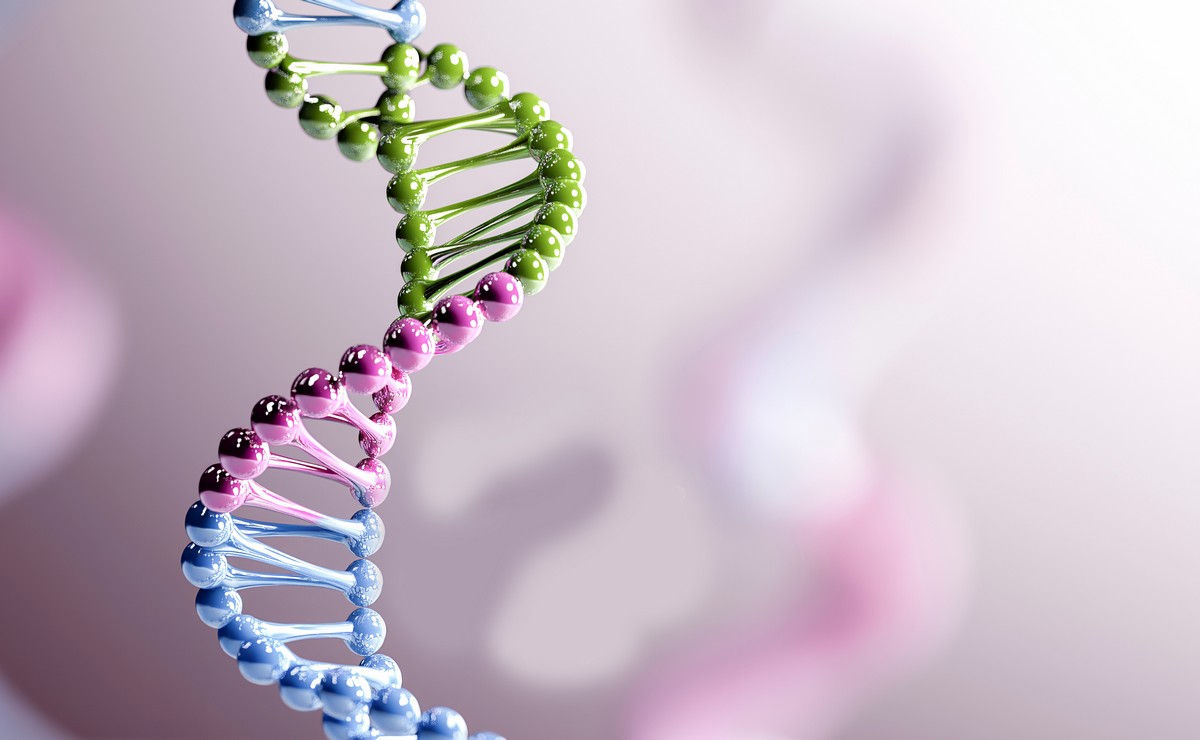
Rare Disease Day 2025
The Rare Disease Day was established in 2008 to create an annual awareness day dedicated to highlighting the needs and living conditions of people affected by rare diseases. The first Rare Disease Day was deliberately held on February 29, a leap day that occurs only once every four years. In all other years – like in 2025 – the awareness day takes place on February 28. Among other achievements, this day has led to the establishment of dedicated institutes for rare diseases at some universities and the development of new, specialized diagnostic procedures for their detection.
Each year, this day is celebrated under a special theme to highlight different aspects of rare diseases and their accompanying circumstances. Under the theme "Rare, but not alone", those affected are encouraged to connect with others and realize that they are not alone in their journey. Many patients use art projects and creative self-portraits on Rare Disease Day to raise awareness about their condition and share their experiences with both sick and healthy individuals. Public exhibitions are held – for example, on February 28 at Dresden Central Station.
Which Diseases Are Considered "Rare Diseases"?
Rare Disease Day focuses on illnesses that are so uncommon that they often go unnoticed by the general public. A disease is generally classified as "rare" if it affects fewer than one person per 2,000 individuals on average. In the EU, a disease is considered rare if it affects fewer than 5 in 10,000 people. If fewer than 0.2 in 10,000 people are affected, a disease is even classified as "extremely rare."
Currently, there are about 17,000 known rare diseases worldwide, most of which are genetic diseases. In Germany, around 5,000 to 8,000 rare diseases have been identified. Globally, over 300 million people suffer from rare diseases. These numbers clearly show that there are many different rare diseases and a large number of affected individuals who deserve public attention and further medical research.

A good 72 percent of rare diseases are genetically determined, and 70 percent of them begin in childhood. Certain types of cancer are also included in these statistics, as one in five cancer cases is classified as "rare." Rare diseases are often difficult to diagnose at first, as their symptoms resemble those of "common" illnesses and can even vary from patient to patient. The lack of scientific research and reliable knowledge frequently leads to misdiagnoses or delayed diagnoses. In addition to high treatment costs, these diseases—due to their chronic, progressive, or degenerative nature—often result in loss of autonomy, significantly impacting the affected individuals' quality of life and self-determination.
Examples of Rare Diseases
- Hereditary Spastic Paraplegia (HSP): A group of degenerative diseases caused by genetic mutations, leading to spastic paralysis in the legs. Severely affected individuals often require a wheelchair.
- Ullrich-Turner Syndrome (UTS): A congenital condition that occurs only in females, resulting in an abnormal distribution of sex chromosomes. It can cause organ malformations, short stature, and make pregnancies impossible or highly risky.
- Ehlers-Danlos Syndrome (EDS): A group of hereditary connective tissue disorders characterized by hypermobile, unstable joints. Skin, muscles, tendons, blood vessels, and internal organs can also be affected, posing life-threatening risks due to spontaneous ruptures.
- Guillain-Barré Syndrome (GBS): A neurological disorder that causes inflammation of the peripheral nervous system, often at the spinal cord's nerve roots. It is triggered by bacterial or viral infections and, if correctly diagnosed, can be treated. However, about 20 percent of affected individuals suffer from residual neurological impairments, such as muscle weakness or paralysis.
- Von Willebrand Disease: A bleeding disorder that impairs blood clotting, leading to prolonged bleeding. Female patients, in particular, often experience extensive bruising.
- Friedreich’s Ataxia (Friedreich’s Disease): A degenerative central nervous system disorder that typically emerges in early life. It causes progressive nerve damage between the spinal cord and cerebellum, leading to motor impairments, muscle stiffness, swallowing difficulties, and, in rare cases, early-onset dementia.
- Multiple System Atrophy (MSA): Symptoms such as slow movements, muscle tremors, stiffness, coordination problems, swallowing, or speech difficulties may indicate MSA, a neurodegenerative disease that affects multiple body systems and leads to rapid motor function loss.
- Retinitis Pigmentosa: Also known as Patermann Syndrome, this degenerative retinal disease damages the eye’s photoreceptors. Symptoms include night blindness, tunnel vision, and impaired color perception, which can ultimately result in complete blindness.
- Osteogenesis Imperfecta: Also known as "brittle bone disease," this rare genetic disorder leads to fragile bones that break easily. It is caused by a mutation in collagen type I genes, reducing bone stability. Patients rely heavily on orthopedic aids and physiotherapy to maintain mobility and participate in daily life.
Rare Disease Day has already led to a shift in thinking across many medical fields and has strengthened international collaborations. The fact that patients, by openly sharing their experiences and demonstrating unwavering resilience, can make a difference is evident in the growing number of participating countries. While the first Rare Disease Day in 2008 was observed in only 18 countries, by 2024, more than 100 countries had taken part in the event.
How Can You Help and Support People with Rare Diseases?
Do you have family members or friends suffering from rare diseases and want to support them more? Simply being willing to understand their unique circumstances and adapt to their needs can make a big difference. The feeling of isolation is one of the biggest psychological challenges faced by people with rare diseases. Show understanding, take the time to listen, and allow them to explain the daily struggles they go through. Patient listening and genuine empathy can be incredibly valuable, as they help reduce feelings of loneliness. Be mindful that your friends, relatives, or acquaintances may not be able to live the same way as most of the healthy population.
Offer Your Help by taking care of errands, helping with household chores, and handling physically demanding tasks such as cleaning or doing laundry. If you have the necessary expertise, you could help make their living space more accessible and safe. Simple measures like installing grab bars in the bathroom or placing non-slip rugs can make a big difference. Of course, it’s important to encourage individuals to do as much as possible on their own to maintain their independence—while also ensuring they have support available when needed.
Try to maintain the social participation of people with rare diseases, which has become so difficult for them. Keep them company and invite them to outings. This could include walks in the park, visits to relatives and friends, or activities within the comfort and safety of their own home. Play board games, cook together, or watch movies.
Naturally, care support is also a possibility in the case of rare diseases. This might involve ensuring the correct and timely intake of medication, or accompanying the affected person to doctor’s appointments or therapy sessions. In some cases, you may even perform necessary physiotherapy exercises together, either at home or in a clinic, or at least assist with them. Physiotherapy and occupational therapy play an important role in the treatment of many rare diseases.
- In the case of Hereditary Spastic Paraplegia (HSP), regular, gentle stretching exercises are performed to improve mobility and reduce muscle stiffness. Warm packs or warm baths help relieve muscle tension.
- For Ehlers-Danlos Syndrome (EDS), gentle sports with minimal strain, such as swimming or yoga, can help strengthen the muscles without putting stress on the joints and tendons.
- Guillain-Barré Syndrome (GBS) also requires early occupational and physiotherapy to restore muscle functions after an illness. In many cases, respiratory therapy is also used, as GBS can negatively affect the respiratory muscles.
- In Friedreich's Ataxia, coordination exercises are used to improve balance and fine motor skills in affected individuals.
Of course, it is always important that the person with the rare disease feels comfortable with the level of attention and assistance they receive. The key to successful support is finding a balance between helping them help themselves and providing appropriate external assistance to strengthen the independence and quality of life of those affected.
Assistive Devices That Can Make Daily Life Easier for Those with Rare Diseases
For many rare diseases, it is necessary to purchase specific orthopedic products such as walkers, wheelchairs, or walking aids to participate as fully as possible in daily life. In cases of chronic conditions that affect the musculoskeletal system, body strength, or coordination, the appropriate walking aids can significantly improve the lives of those affected. Walking aids like crutches or walkers are essential tools that provide stability, help reduce pain and effort, and enable a more active, independent life overall.
Here are some concrete examples of why purchasing walking aids can be beneficial:
- In the case of Hereditary Spastic Paraplegia (HSP), progressive stiffness and weakness in the legs occur. Walking aids help maintain balance and prevent falls. Depending on the severity of the disease, walking sticks, crutches, or walkers can assist in prolonging the ability to walk without a wheelchair.
- In hypermobile Ehlers-Danlos Syndrome (EDS), hypermobile joints lead to instability and pain. Walkers or walking sticks relieve the joints by supporting the body weight, thus preventing injuries.
- For those with Guillain-Barré Syndrome (GBS), walkers or walking frames are often used temporarily during rehabilitation to compensate for acute muscle weakness.
- Those suffering from Friedreich's Ataxia can purchase walking aids to enable longer periods of independent walking despite progressive coordination issues.
- In cases of Multiple System Atrophy (MSA), rapid loss of motor control is a risk. Here, walkers with comfortable seating areas can provide safety and rest periods.
- For individuals with Osteogenesis Imperfecta (brittle bone disease), walking supports or walking carts relieve the legs and help prevent falls.
In summary, suitable walking aids improve the lives of individuals suffering from rare diseases in the following ways:
- Walking aids provide more independence by helping individuals manage their daily tasks independently.
- Appropriate orthopedic products can contribute to pain reduction by easing the strain on weakened muscles and joints.
- Walking supports aid in fall prevention and minimize the risk of injury.
- Social participation is improved with walking aids, as individuals can actively engage in public life once again.
- By maintaining mobility, the need for a wheelchair can sometimes be delayed. However, even with modern, lightweight wheelchairs, active participation in daily life is still possible.
We wish all those suffering from rare diseases much strength on this day and every day to continue moving forward and never give up. With each passing year, global attention and the willingness to invest in research and treatment of the rarest diseases are growing. You are "rare," but you are not alone!



